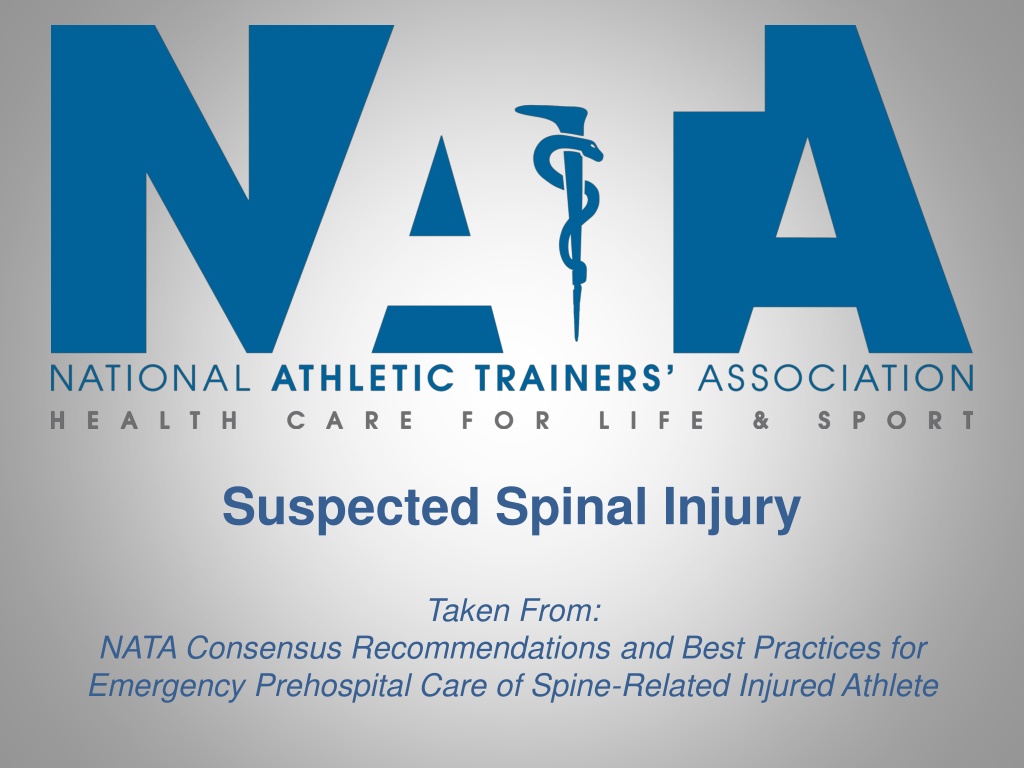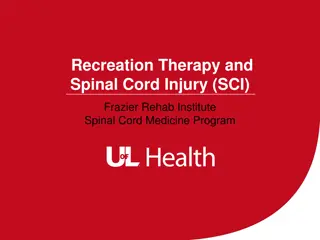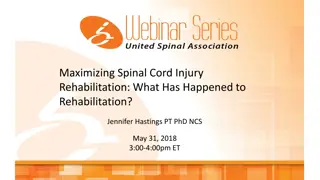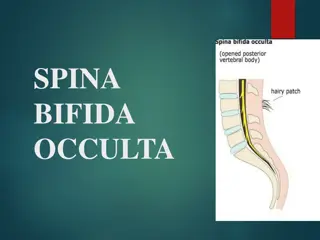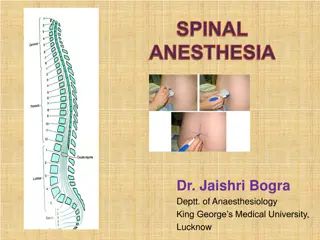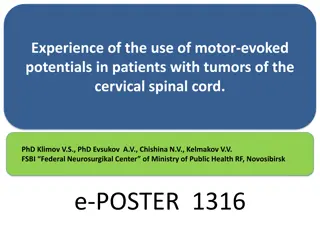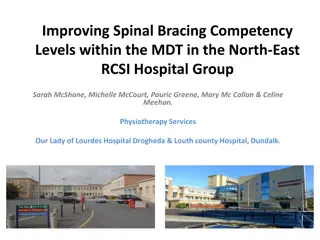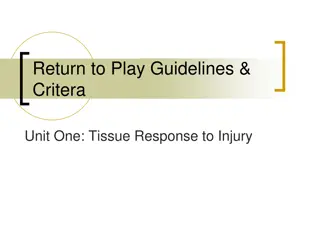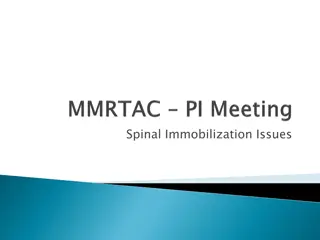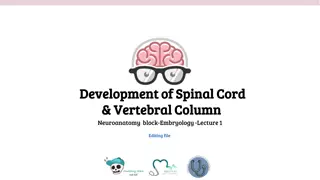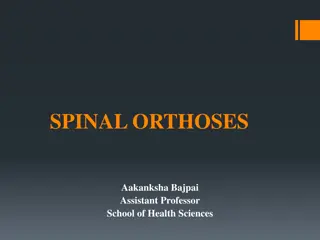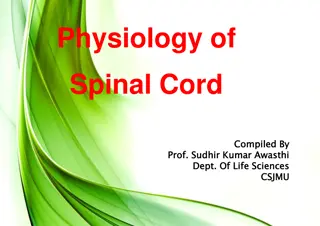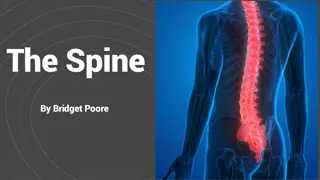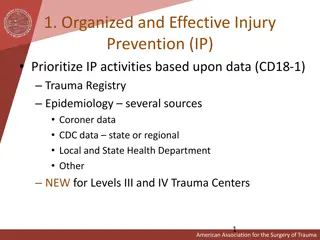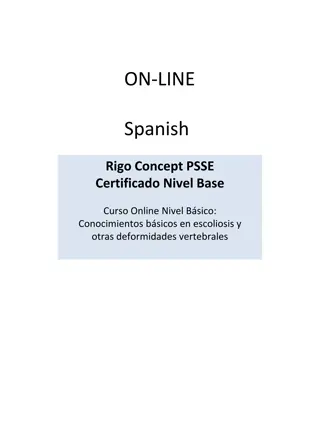Best Practices for Suspected Spinal Injury Management in Athletes
Athletic programs should have an Emergency Action Plan (EAP) for pre-hospital spine-injury care. Key recommendations include transportation to a designated trauma center, conducting pre-event medical time outs, and involving trained personnel in equipment removal. Removal of helmet and shoulder pads can occur on-field for potential advantages before hospital transport. Spine-injured athletes should be taken to medical facilities with immediate and definitive care capabilities for significant cervical spine injuries.
Download Presentation

Please find below an Image/Link to download the presentation.
The content on the website is provided AS IS for your information and personal use only. It may not be sold, licensed, or shared on other websites without obtaining consent from the author. Download presentation by click this link. If you encounter any issues during the download, it is possible that the publisher has removed the file from their server.
E N D
Presentation Transcript
Suspected Spinal Injury Taken From: NATA Consensus Recommendations and Best Practices for Emergency Prehospital Care of Spine-Related Injured Athlete
Suspected Spinal Injury Key Recommendations Athletic programs should have an emergency action plan (EAP) developed in conjunction with local emergency medical services agencies specific to pre-hospital spine-injury care Best practices are for an athlete with a suspected spinal injury to be transported to a designated Level 1 or 2 trauma center as quickly and safely as possible. Sports medicine teams should conduct a pre-event medical time out before each athletic event (practices and competitions) Participating in these time outs should include medical personnel from both teams, EMS personnel and game officials When feasible, those with the highest level of training and experience in removal techniques should participate in equipment removal Athletic trainers are recognized as the medical professional with the most training and experience in athletic equipment removal
Suspected Spinal Injury Key Recommendations Removal of the helmet and shoulder pads can occur in the emergency room or on the field There are potential advantages to on-field removal prior to transport to the hospital, such as improved airway management, access to the chest for CPR, and expedited care of the athlete The decision to remove equipment before transport should be based on a variety of factors, such as the medical status of the injured athlete, type of equipment worn, number of onsite rescuers and training and experience of on-the-field and emergency room rescuers in equipment removal If a spine board is used in the care of an athlete with a suspected cervical spine injury, non-athlete data recommends that time on the board be minimized, however, the board is left in place for transport to the hospital
Suspected Spinal Injury Key Recommendations If feasible, spine-injured athletes should be transported to a medical facility that can deliver immediate and definitive care in the event the athlete has a significant cervical spine injury This includes: an emergency department with certified emergency medicine physicians; personnel trained in equipment removal; advanced imaging services; spine surgeon consultation in house or readily available; 24/7 operating access; and critical care monitoring and rehabilitation services
Institutional Policies on Suspected Spinal Injury Insert any particular policies of your university regarding Suspected Spinal Injury here.
